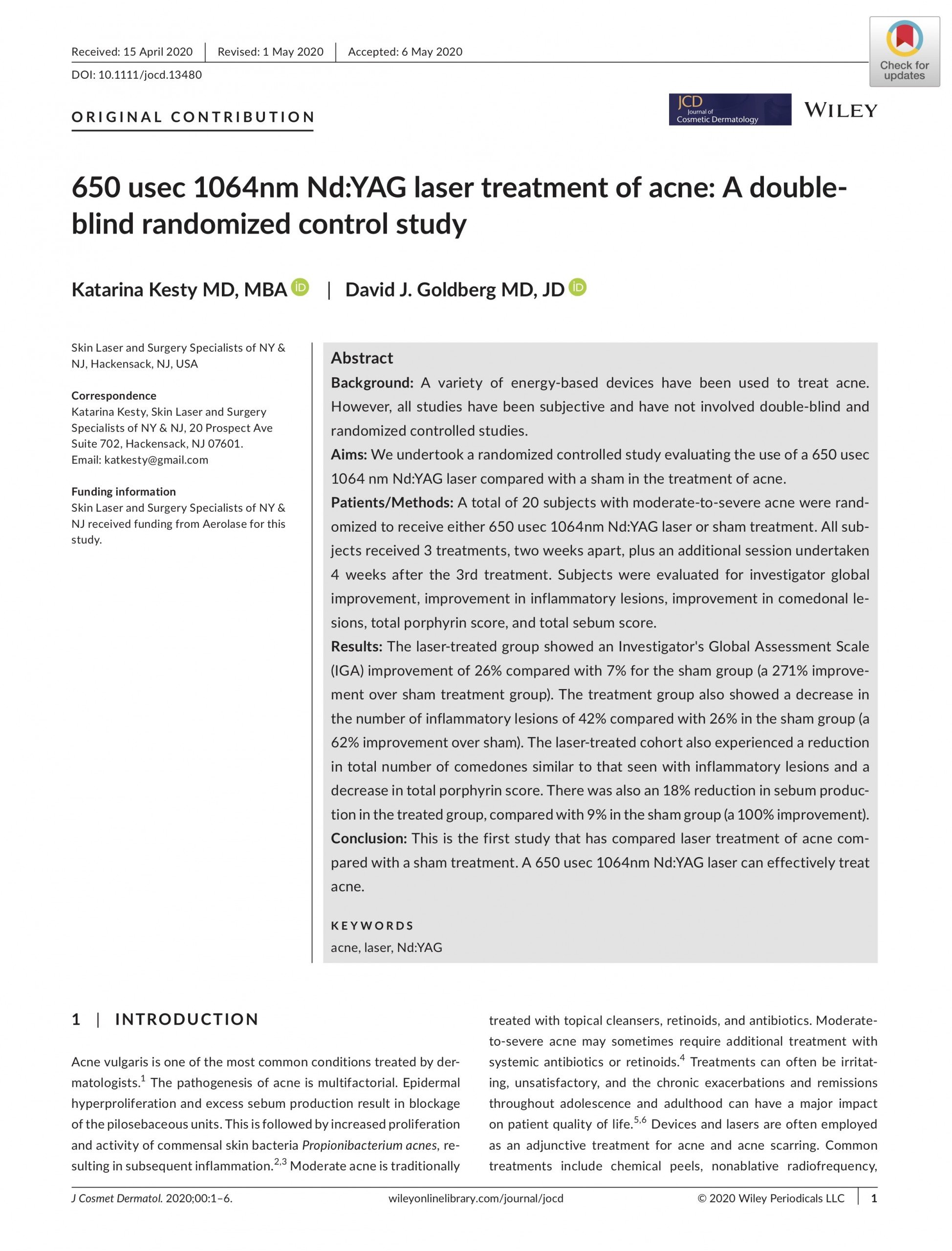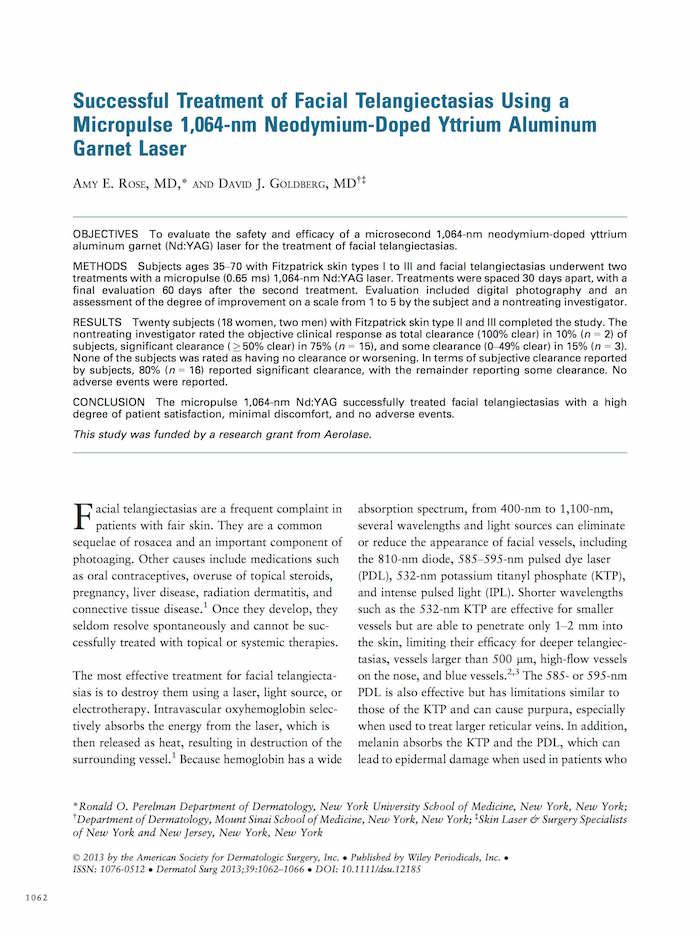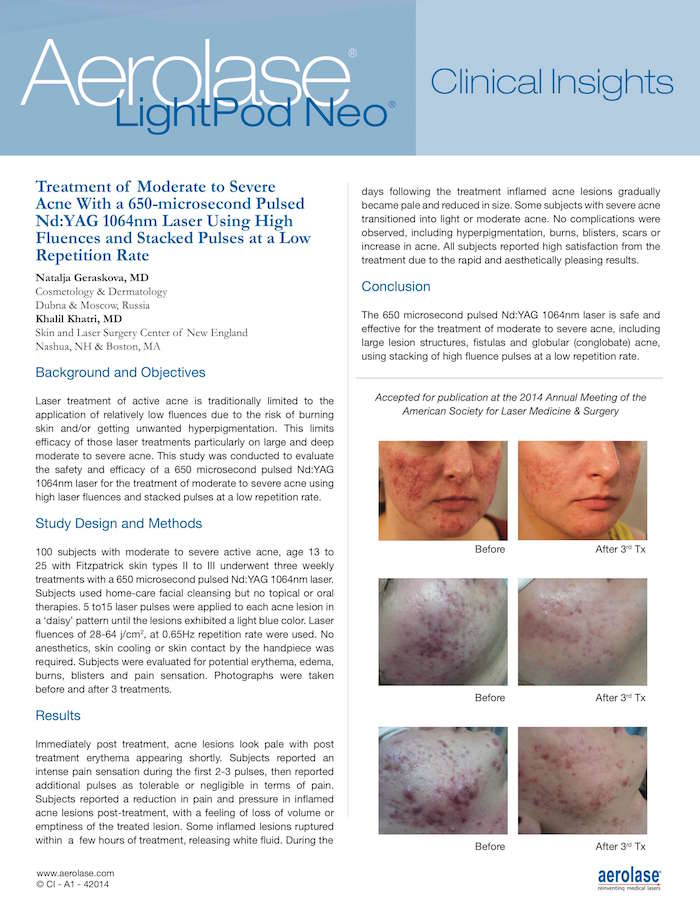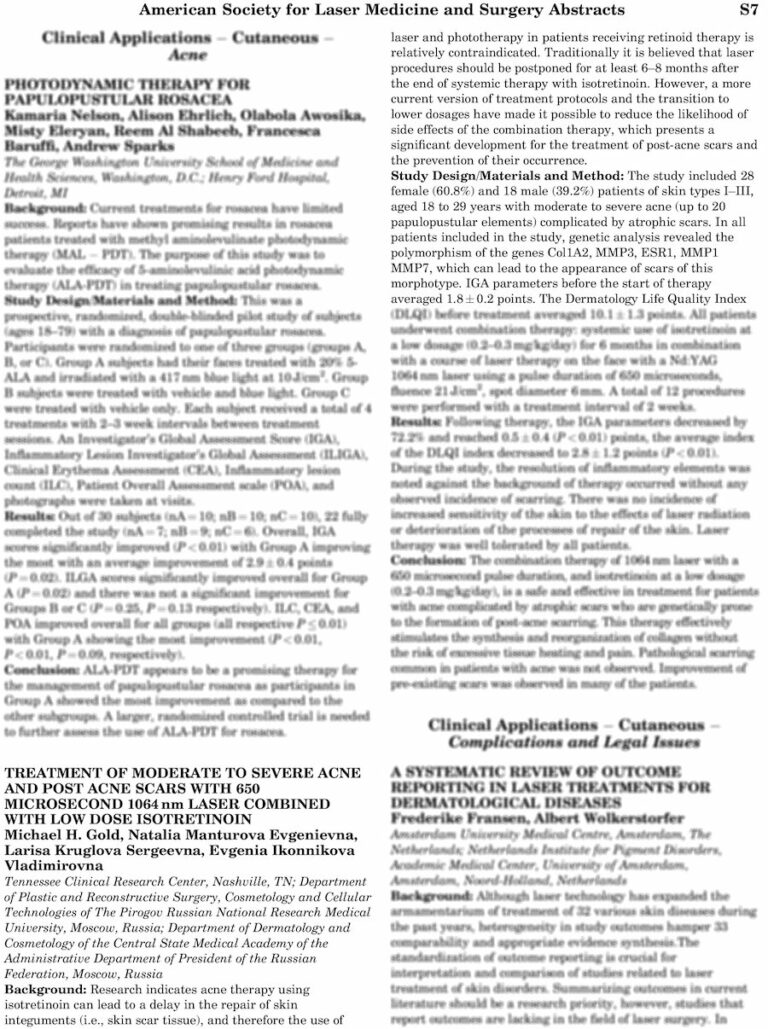David J. Goldberg MD, JD; Katarina Kesty MD, MBA; Skin Laser and Surgery Specialists of NY & NJ, Hackensack, NJ, USA
Journal of Cosmetic Dermatology, July 2020
Acne vulgaris is one of the most common conditions treated by dermatologists.1 The pathogenesis of acne is multifactorial. Epidermal hyperproliferation and excess sebum production result in blockage of the pilosebaceous units. This is followed by increased proliferation and activity of commensal skin bacteria Propionibacterium acnes, resulting in subsequent inflammation.2,3 Moderate acne is traditionally treated with topical cleansers, retinoids, and antibiotics. Moderate-to-severe acne may sometimes require additional treatment with systemic antibiotics or retinoids.4 Treatments can often be irritating, unsatisfactory, and the chronic exacerbations and remissions throughout adolescence and adulthood can have a major impact on patient quality of life.5,6 Devices and lasers are often employed as an adjunctive treatment for acne and acne scarring. Common treatments include chemical peels, nonablative radiofrequency, and microneedling with radiofrequency.7–11 Studies have reported some efficacy of laser treatment.12–16 Laser therapy can be successful in diminishing acne vulgaris lesions by halting overactive sebaceous gland activity and alleviating the effects of inflammation. The mechanism of action is thought to be by activation of porphyrins produced by Propionibacterium acnes, resulting in the destruction of cell membranes of these bacteria. Lasers with a 1064 nm wavelength have been studied for acne. One study done by Ballin and Ubelhoer treated one patient with 10 sessions of a laser with 1064-nm Nd:YAG and resulted in almost 100% clearance of lesions.17 Another study compared intense-pulsed light with 1064-nm Nd:YAG and found no significant difference in the treatment of acne.18
Typical Nd:YAG 1064nm lasers operate with longer pulse durations anywhere from 3 to 30 milliseconds. The laser used in this study has a 650-microsecond pulse duration. This is a new technology where all necessary power settings from 4 J/cm2 to 255 J/ cm2 can be delivered within a 650-microsecond pulse in a variety of spot sizes and at a fast repetition rate of up to 2.0 Hz. A total of 650 microseconds is below the thermal relaxation time of the skin tissue, so the skin has time to cool itself between pulses, thus confining the heat in the selectively absorbed target for higher clinical efficacy and safety to the surrounding skin.19 The high-energy pulse is delivered into the target in such a short-pulse duration. The targeted structure has less time to lose heat, through conduction, to the surrounding skin, so the target reaches a higher temperature.
A higher temperature in the targeted tissue translates into greater target tissue destruction for higher efficacy. We undertook a randomized controlled study evaluating the use of 650-microsecond 1064 nm Nd:YAG laser compared with a sham in the treatment of moderate-to-severe acne.




